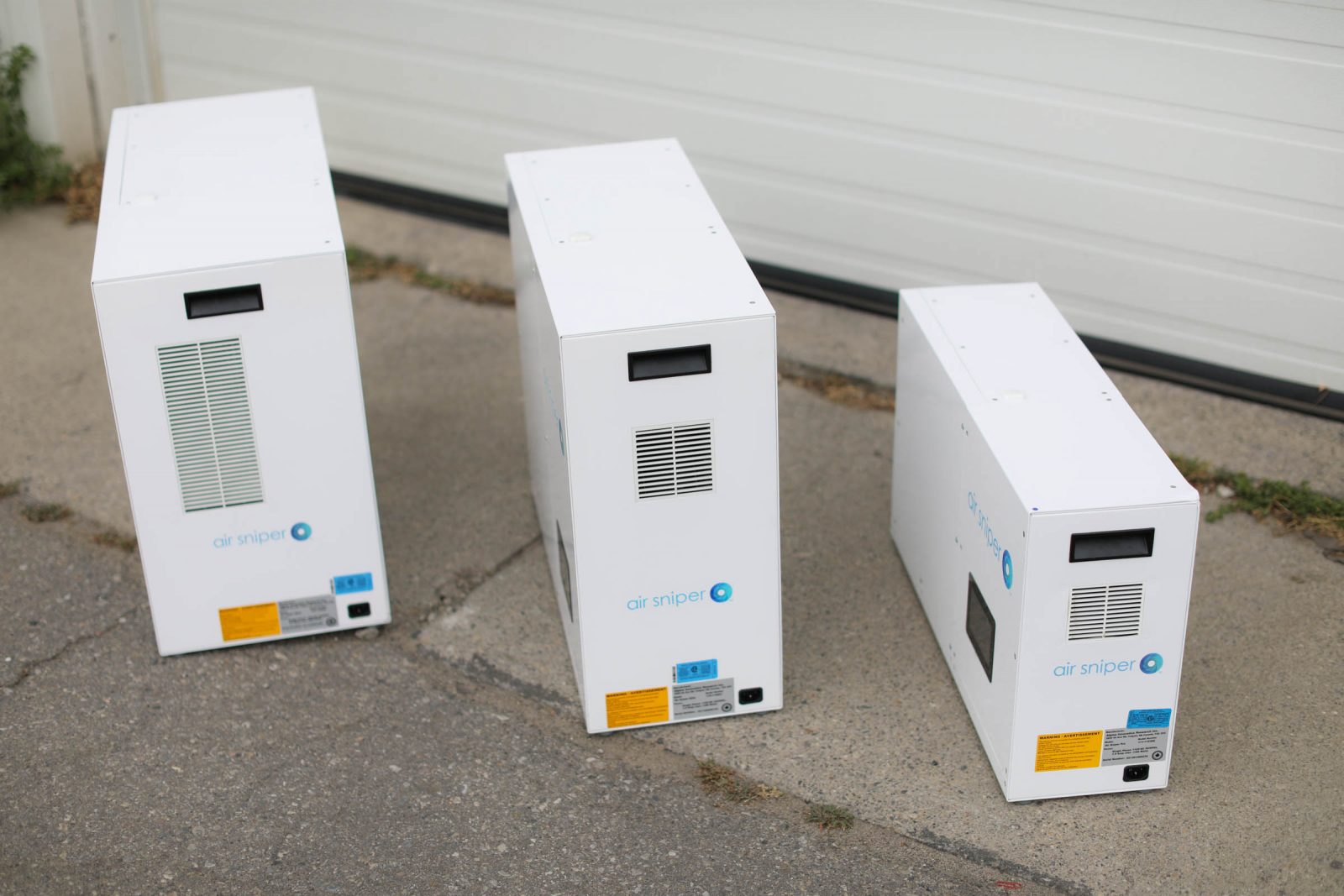The air we breathe is essential to our survival, but it seems so easy to overlook at the same time. Perhaps we ignore it because we can’t see it swirling around us, or observe the different concentrations of substances from one pocket to the next. Whatever the reason, simply paying the air we breathe no attention will not reduce its potential for negative side effects.
From this article, you will learn about the effects of poor indoor air quality and what measures can be taken.
The Significance of Indoor Air Quality
The term “indoor air quality” pertains to the air’s cleanliness within spaces like homes, schools, offices, and other buildings.
Indoor levels of certain pollutants have risen in recent years due to factors like energy-efficient building designs that may lack proper ventilation, as well as increased use of synthetic building materials and household cleaners.
Indeed poor indoor air quality has many negative side effects that are possible with poor air quality. Below we look at how concentrations of mold, pet dander, dust mite allergens, and other substances can be responsible for a variety of health problems. These can affect our lungs and hearts primarily, but our whole body may suffer from particular risks. Learn more down below.
Pollutants and Their Origins
Common pollutants:
- Combustion by-products such as carbon monoxide and tobacco smoke.
- Natural substances such as radon, pet dander, and mold.
- Biological agents like molds.
- Chemicals such as pesticides, lead, and asbestos.
- Ozone is emitted by certain air purification systems.
- Different volatile organic compounds are sourced from various products and materials.
Most indoor air quality pollutants stem from sources within buildings, although some originate outdoors.
Indoor Sources
Combustion sources within indoor environments, such as tobacco use and heating/cooking appliances utilizing wood or coal, can emit harmful byproducts directly into the indoor air.
Common household products like cleaning supplies, paints, and insecticides introduce numerous chemicals, including volatile organic compounds, into the indoor environment.
Building materials, whether degrading (e.g., asbestos fibers from insulation) or new (e.g., off-gassing from pressed wood products), can also contribute to indoor air pollution. Additionally, natural elements like radon, mold, and pet dander are present indoors.
Outdoor Sources
Outdoor air pollutants infiltrate buildings through openings like doors, windows, ventilation systems, and structural cracks. For instance, smoke from chimneys can re-enter homes, polluting indoor air and neighboring buildings.
Certain pollutants, like radon, can enter buildings through cracks in foundations. In areas with contaminated groundwater or soils, volatile chemicals may enter buildings through the same process.
Volatile chemicals from water supplies can also enter indoor air when occupants use the water, such as during showering or cooking.
Lastly, people can inadvertently introduce outdoor pollutants like soil and dust on their shoes and clothing when entering buildings.
Additional Factors Impacting Indoor Air Quality
Poor indoor air quality also occurs due to air exchange rates, environmental conditions, weather conditions, and human activity.
The rate of air exchange with the outdoor environment plays a crucial role in determining the concentration of indoor air pollutants. This rate is influenced by the design, construction, and operational characteristics of buildings, and is primarily determined by infiltration (the flow of outdoor air into buildings through gaps, cracks, and openings in walls, floors, ceilings, windows, and doors), natural ventilation (airflow through open windows and doors), and mechanical ventilation (forced air movement facilitated by ventilation systems like fans or air handling units).
Outdoor climate conditions and weather patterns, along with occupant behavior, also impact indoor air quality. Weather conditions dictate whether occupants choose to open or close windows and operate air conditioning units, humidifiers, or heaters, all of which can influence indoor air conditions. Specific climatic circumstances can exacerbate indoor moisture levels and mold growth if not managed effectively through proper ventilation or air conditioning systems.
The Possible Risks Associated with Poor Air Quality
Breathing & Lung Conditions
Remember when smoke alarms used to be just smoke alarms? Now, of course, they are packaged together with carbon monoxide detectors as well. The installation and readiness of these devices is a mandate in all human dwellings, but obviously, they aren’t there only to prevent fires. They also sound when dangerous gases are present to alert us.

Our lungs are highly sensitive to what we breathe, as evidenced by our desire for emergency warnings. Still, we do not yet have warning systems for all the dangerous indoor air contaminant concentrations possible. This means allergies, asthma, and chronic obstructive pulmonary disease (COPD) are still prevalent illnesses and health concerns, especially for at-risk youth and aged populations.
Heart Conditions
Your heart can also be affected by dangerous indoor air quality. Many heart-related health concerns have been linked to air quality in some way, including:
- Arrhythmia
- Heart attack
- Heart failure
- Angina
- Hypertension
Particulate Conditions
Thus far, we have discussed how common airborne contaminants may affect our health. However, many uncommon substances are even more dangerous in concentrated amounts, including asbestos and free silica. These substances affect the body over a long time and can lead to asbestosis and silicosis, which are often difficult to treat.
Radon-Related Cancer
Radon is a substance that leaks up out of the earth. It can become trapped in our homes from leakages in our basement or foundation and is a known carcinogen. Testing for this substance is often done during the sale of a house by a qualified home inspector, but individual testing kits are available.
Headaches and Fatigue
Poor indoor air quality has been linked to symptoms like headaches, fatigue, and difficulty concentrating. These effects can impair cognitive function and reduce overall quality of life.
Irritation of Eyes, Nose, and Throat
Indoor air pollutants can irritate the eyes, nose, and throat, leading to symptoms like watery eyes, runny nose, sore throat, and coughing. These symptoms can reduce comfort and productivity and may worsen existing respiratory conditions.
Poor Sleep Quality
Poor indoor air quality can disrupt sleep patterns and lead to poor sleep quality. This can result in daytime fatigue, irritability, and decreased productivity.
Impact on Mental Health
Poor indoor air quality can also have an impact on mental health, contributing to symptoms of anxiety, depression, and stress. Additionally, discomfort and health concerns related to indoor air quality may lead to decreased overall well-being and quality of life.

Who Faces a Heightened Risk?
Nearly everyone is susceptible to indoor air pollution risks, influenced by both individual health factors and the quality of the indoor environments they inhabit. This concern is amplified as people typically spend the majority of their time indoors, up to 90%.
Children, in particular, are more vulnerable to the adverse effects of indoor air pollution, especially due to prolonged exposure in school environments. Schools often suffer from poor indoor air quality (IAQ) due to aging infrastructure and insufficient funding to address environmental concerns, posing a nationwide challenge. Children’s developing bodies make them more sensitive to toxins, and their behaviors, such as increased hand-to-mouth activity, elevate their exposure levels.
Children with asthma face an even greater risk of health complications, including asthma exacerbation, due to IAQ issues. However, adults are also susceptible to the negative impacts of poor IAQ, potentially developing adult-onset asthma. Both adults and children prone to asthma can experience symptoms or flare-ups due to exposure to allergens like dust mites, pests, pet dander, mold, and secondhand smoke.
If you want to get rid of poor indoor air quality, then Air Sniper can help you.
Learn how Air Sniper can help ensure your building is as clean and safe as possible with effective supplementary air sanitizing solutions. Contact them today for more information. The contact phone number is 1-888-338-9549.

